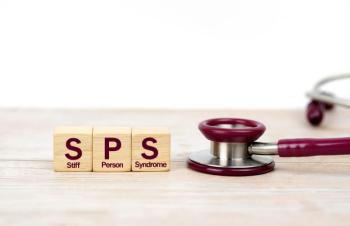
Inhaled corticosteroids administered within 90 days of discharge reduce mortality rate in COPD patients
Administration of inhaled corticosteroids (ICS) within 90 days of hospital discharge is effective in reducing mortality in chronic obstructive pulmonary disease (COPD) patients, especially among those aged 35 to 64 years, according to a recent study published in the journal Chest.
Administration of inhaled cortico-steroids (ICS) within 90 days of hospital discharge is effective in reducing mortality in chronic obstructive pulmonary disease (COPD) patients, especially among those aged 35 to 64 years, according to a recent study published in the journal Chest.
The research, consisting of both a cohort study (analyzed using Cox proportional hazard models) and a nested case-control analysis (analyzed using conditional logistic regression), compared mortality rates in COPD patients who received ICS within 90 days of hospital discharge with mortality rates in patients who did not receive ICS. Patients were pooled from the Manitoba (Canada) Population Health Research Repository and included all patients aged ≥35 years who had been admitted to the hospital between April 1, 1996, and March 31, 2000, and had been discharged with a primary diagnosis of COPD. Follow-up was 1 year or until death. Patients who died ≤90 days after hospital discharge were excluded. Patients (N=4,987) were divided into 2 groups: aged 35 to 64 years (n=965) and aged ≥65 years (n=4,022).
In the group of patients aged 35 to 64 years, 369 patients (mean age, 56.3±6.9 years) received ICS within 90 days of discharge, and 596 patients (mean age, 54.5±8.1 years) did not receive ICS. The mortality rate between 90 and 365 days was 3.3% among patients who received ICS and 6% among patients who did not receive ICS, representing a 53% reduction in mortality.
In the cohort analysis, patients were classified as either ICS users or nonusers based on drug dispensation records ≤90 days after hospital discharge. Significant differences were noted between groups in terms of receipt of ICS: 79.5% of users filled a prescription for ICS between 90 and 365 days after discharge compared with 12.0% of nonusers. Substantial differences also were noted in regard to refills between 90 and 365 days after discharge: approximately 40% to 45% of users received additional ICS compared with 5% to 10% of nonusers.
Also of significance were the time frames in which ICS were used: 0 to 30 days, 30 to 60 days, 60 to 90 days, and >90 days before death. The receipt of ICS <30 days before death demonstrated the greatest mortality reductions in both COPD deaths (adjusted OR=0.61; 95% CI, 0.41–0.91) and cardiovascular deaths (adjusted OR=0.54; 95% CI, 0.34–0.86).
Compared with bronchodilators, ICS reduced the risk of death by 23% (95% CI, 6%–37%), with a significant 38% reduction in cardiovascular deaths (95% CI, 11%–57%), but no significant reduction in COPD mortality was observed. Overall mortality reduction with ICS was similar to that observed in patients who had received neither bronchodilators nor inhaled steroids.
SOURCE Macie C, Wooldrage K, Manfreda J,Anthonisen NR. Inhaled corticosteroids andmortality in COPD. Chest. 2006;130:640–646.
Newsletter
Get the latest industry news, event updates, and more from Managed healthcare Executive.


















































